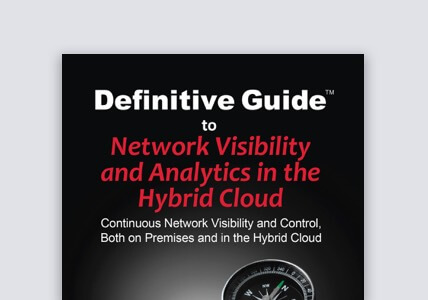The Control Plane’s Evolving 5G Role in Enabling Visibility of the Future
This article was originally published by TechUK.
The arrival of 5G in more countries and cities is putting a strain on communication service providers (CSPs). The opportunities for new services, super-fast mobile broadband, the rise of smart cities and driverless cars are all part of the 5G landscape. Delivering on this promise and meeting the raised consumer and business expectations is already making new demands on mobile operators and their existing network infrastructure. How can a CSP successfully manage the transition from 4G to 5G core and what do they need to be thinking about now in order to avoid bigger problems in the future?
What CSPs Can Learn from Early Adopters
There is no question that 5G is going to deliver exponential growth in traffic and the number of different devices connected to the network. This will leave operators looking for new ways to efficiently and effectively monitor performance in the full 5G core when built, as well as the 4G core in transition. The disaggregation of the control plane and physical separation of the control and user planes (CUPS) adds another layer of complexity. Also weighing on operators’ minds is the challenge of ensuring that their 5G rollout doesn’t risk undermining or negating investments that have already been made in network monitoring and security visibility infrastructure.
One of the key learnings that has come from some of the earlier 5G rollouts in the Asia-Pacific (APAC) and North America (NA) regions has been to recognize the importance of having visibility and understanding of the subscriber attributes and stateful information contained within the control plane, in order to correlate subscriber-specific user sessions carried within the user plane. The critical step to enabling coherent traffic data delivery to network monitoring and security tools is deploying a visibility layer between the network infrastructure and tools. Installing appropriate monitoring policies within this visibility layer, known as a visibility and analytics fabric, will intelligently deliver subscriber traffic to specific tools by correlating subscriber-specific attributes — such as user, device, or network slice information — and allowing traffic to be delivered and processed in a more intelligent subscriber-aware manner. The correlation application helps carriers gain access to the subscriber traffic in the user plane tunnels by reliably passing all of each identified subscriber’s control and data sessions to the analytics, monitoring and security applications, or even billing sub-systems to ensure an accurate view of all subscriber sessions.
The Core Question: How to Protect and Futureproof the Investment
The move to adopting a more subscriber-aware approach to network management and optimization addresses concerns that are being raised around the wider field of 5G monitoring tools. The development of predominately network-focused 5G tools doesn’t give the CSP the kind of deep visibility into traffic types that will be needed to support the plethora of different devices that 5G will enable. There is a school of thought that suggests that a solely network-focused approach may actually compromise the effectiveness of a CSP’s evolving 5G services.
The appeal of 4G/5G correlation to CSPs is that they can optimize current tool infrastructure investments by forwarding only traffic of interest and relevant data to the tools while increasing visibility into the subscriber traffic. This can help improve quality of experience (QoE), performance, and network security, whilst minimizing costs. Ultimately, the 5G correlation approach will enable vastly improved optimization of user plane traffic, which will generate greater tool efficiency and effectiveness utilizing a best-in-class, modern subscriber-aware visibility platform for the emerging 5G network. A more focused and much deeper understanding of the type of traffic that is being driven across the network by 5G devices will allow a CSP to optimize per-subscriber monitoring costs.
A focus on visibility with correlation can protect the investment in tools as a CSP transitions from 4G to 5G. It will also ensure that the right infrastructure is in place to take full advantage of the raft of new services and applications that 5G will enable in the future, from connected smart cities to remote surgery. While EMEA follows behind APAC’s and NA’s 5G rollouts, it is integral we look to previous key learnings and acknowledge what has worked, as well as what hasn’t. For CSPs in the EMEA region, recognizing the importance of gaining visibility of subscriber attributes is one of the central takeaways following deployments elsewhere around the world.
Featured Webinars
Hear from our experts on the latest trends and best practices to optimize your network visibility and analysis.

CONTINUE THE DISCUSSION
People are talking about this in the Gigamon Community’s Service Provider group.
Share your thoughts today








 Matt Percival
Matt Percival